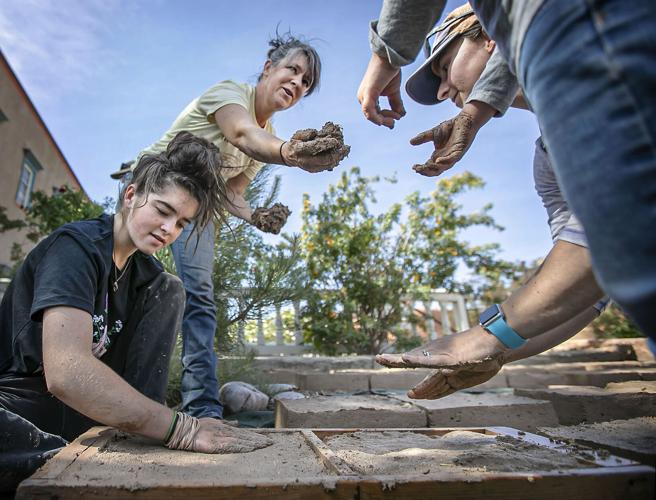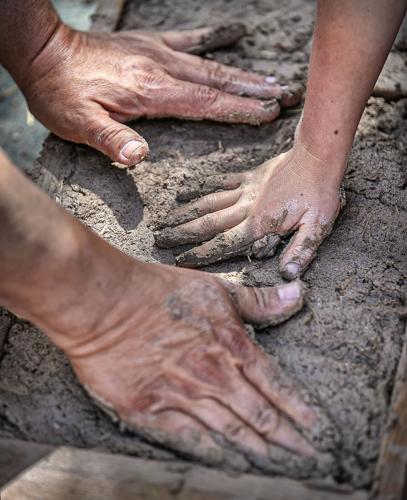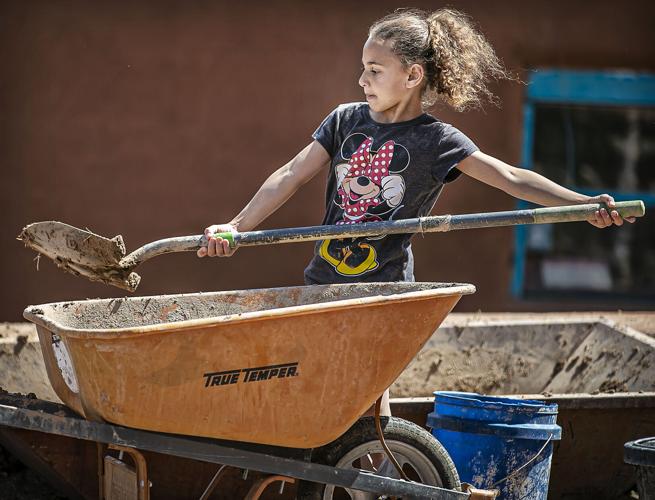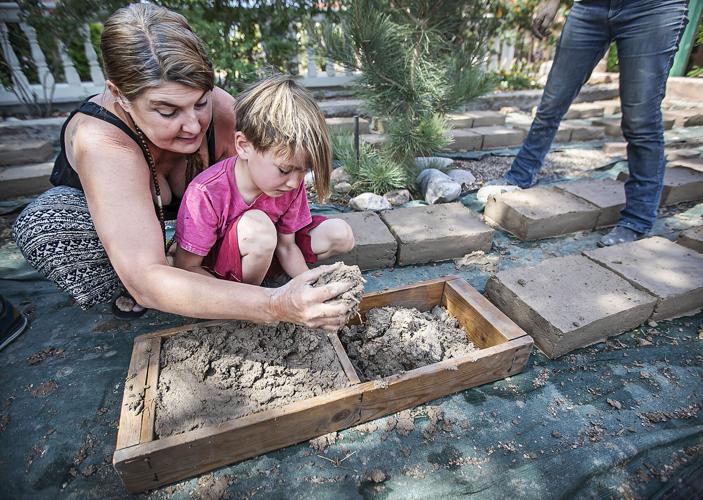Clay, sand and a little bit of straw. Add some water, pack the mixture into bricks and let them bake under the hot summer sun.
 Adobe is an ancient building material that has become more popular in recent years because it is environmentally friendly, according to the Earthbuilders’ Guild, an organization that promotes and aims to preserve earthen construction.
Adobe is an ancient building material that has become more popular in recent years because it is environmentally friendly, according to the Earthbuilders’ Guild, an organization that promotes and aims to preserve earthen construction.
 The use of adobe in the Southwest dates to the 17th century, when it was introduced by the Spanish. The bricks are stacked into walls for a home or church and then slathered with more adobe to create a smooth mud-plaster finish. In New Mexico, before the 20th century, most of the villages were all built out of adobe.
The use of adobe in the Southwest dates to the 17th century, when it was introduced by the Spanish. The bricks are stacked into walls for a home or church and then slathered with more adobe to create a smooth mud-plaster finish. In New Mexico, before the 20th century, most of the villages were all built out of adobe.
Members of the Earthbuilders’ Guild and community people gathered at the San Miguel Chapel in downtown Santa Fe, one of the nation’s oldest churches, to learn the craft and help recreate history by building bricks together. The bricks will be used to restore historic adobe buildings throughout Northern New Mexico. It is important for people to see historic adobe buildings like the San Miguel Chapel and feel the texture of the straw and gravel embedded in its walls.
 Most modern adobe-style houses are made from stabilized adobe — which contains asphalt — but some Native American and rural communities still use traditional brick-making methods to build their homes.
Most modern adobe-style houses are made from stabilized adobe — which contains asphalt — but some Native American and rural communities still use traditional brick-making methods to build their homes.
 Adobe homes can be more expensive and take longer to build, but there are benefits. When built properly, adobe homes can retain temperature, keeping them cool in the summer and warm in the winter. They cost less to maintain and can last hundreds of years.
Adobe homes can be more expensive and take longer to build, but there are benefits. When built properly, adobe homes can retain temperature, keeping them cool in the summer and warm in the winter. They cost less to maintain and can last hundreds of years.
You can read the original article at www.santafenewmexican.com
